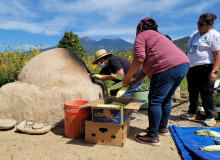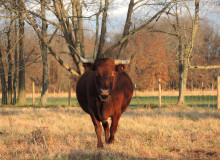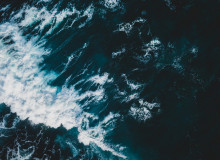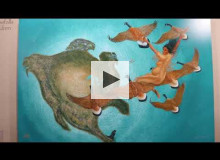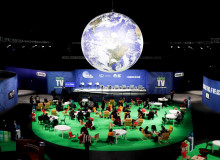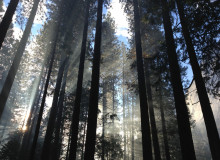Indigenous Knowledge
Indigenous Correspondents Program | Northern Arizona University
Two Indigenous environmental professionals share how their work supports climate justice and is informed by their heritage.
Indigenous Correspondents Program | University of Arizona
In this podcast, Nadira Mitchell, a Diné student studying natural resources and wildlife conservation, weaves an oral story about snails in the Sonoran desert, Diné culture, traditional ecological knowledge, and science.
George Washington University
Our current global food system leaves billions of people underfed or overweight and contributes to one-third of global greenhouse gas emissions. Piscataway woman Anjela Barnes says it doesn't have to be this way.
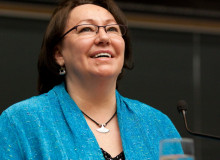
Sheila Watt-Cloutier in 2009. (TheSilentPhotographer/CC BY 3.0)
Planet Forward Senior Correspondent | New York University
I reviewed Sheila Watt-Cloutier's book, "The Right to be Cold" and discuss the potentially divisive implications of one-size-fits-all approaches to climate action and environmentalism.
Georgetown University
Traditional Indigenous mariculture practices are easier on the environment and sustainably produce delicious seafood.
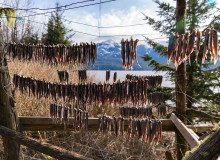
Sun-dried candlefish, also known as hooligan, eulachon, and oolichan. (Brodie Guy/Flickr (CC BY-NC-ND 2.0))
George Washington University
Today, petroleum is one of Alaska's main exports, but the use of oil in the region goes back thousands of years to the Tlingit people's harvesting of lipid-dense and flammable candlefish. Can this history illuminate a way to a green-fueled future?
SUNY Environmental Science and Forestry
Located on Onondaga Lake, what was once deemed as the second most polluted lake in the nation, the Skä•Noñh Center highlights what it means to care for the Earth.
Planet Forward Correspondent | SUNY Environmental Science and Forestry
In the aftermath of COP26, PF Correspondent Lily John sat down with social-ecological systems and ecological economics researcher Dr. Valerie Luzadis, who attended the summit virtually.
Planet Forward Correspondent | George Washington University
Today we look at a topic that spans almost every day of the conference: Indigenous peoples’ knowledge, experiences, and solutions to climate change.
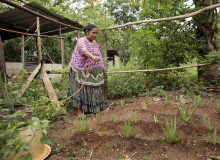
In 2015, in collaboration with Indigenous leaders and Indigenous youth, FAO identified 6 pillars of work and 2 focus areas—Indigenous women and Indigenous youth—as part of FAO’s goal of freeing the world of hunger and malnutrition (Photo courtesy of UN Women/Ryan Brown https://creativecommons.org/licenses/by-nc-nd/2.0/).
Planet Forward FAO Fellow | University of Oklahoma
Indigenous Peoples’ communities' challenges and priorities of “food security, food sovereignty, and health have accelerated and intensified during the COVID-19 pandemic,” according to Indigenous Peoples’ Liaison Mikaila Way.

